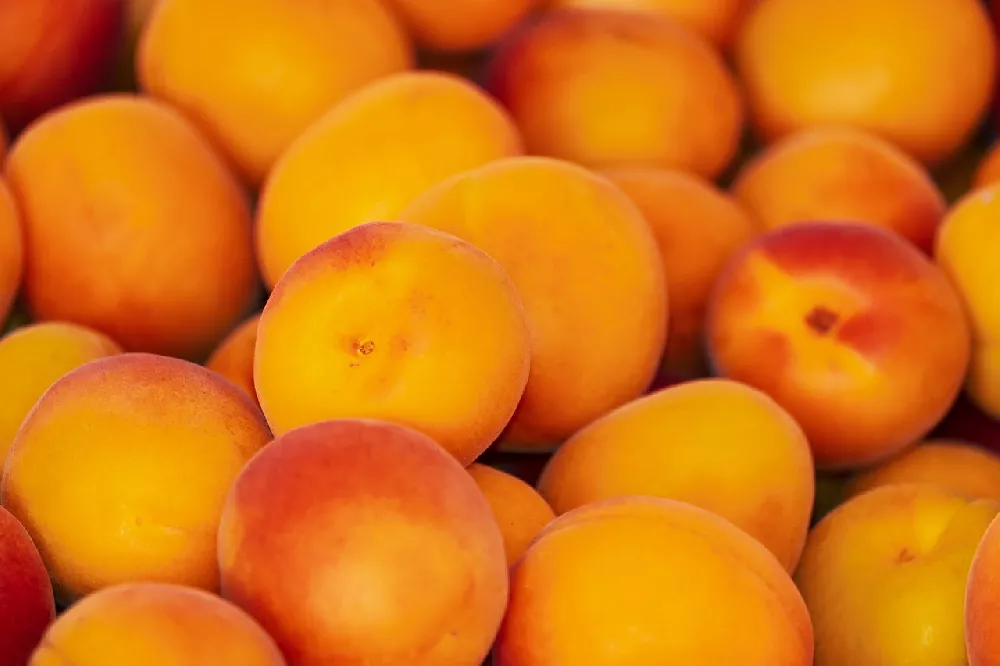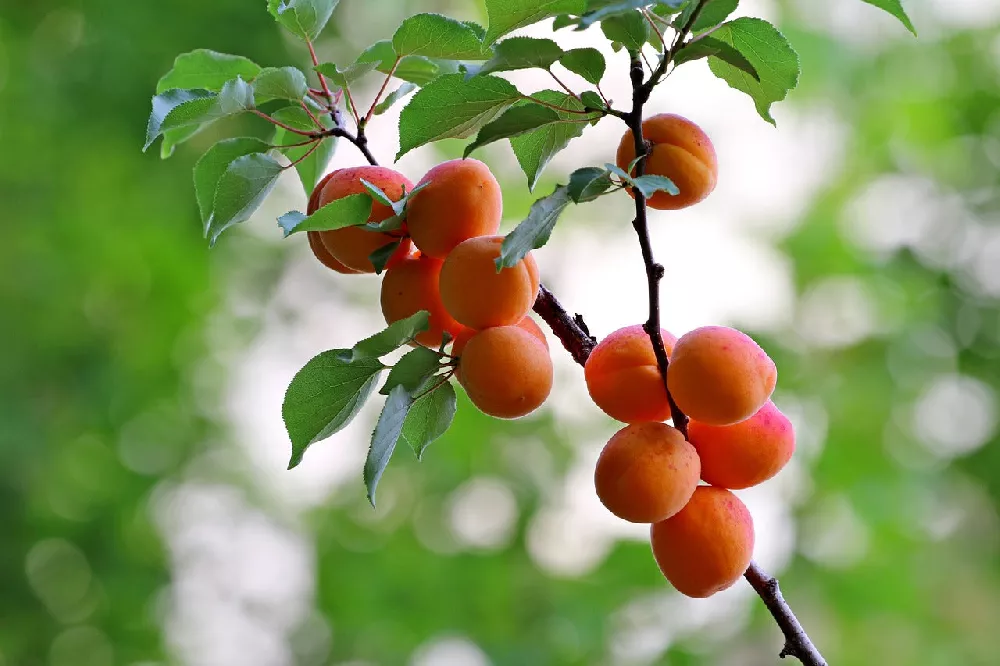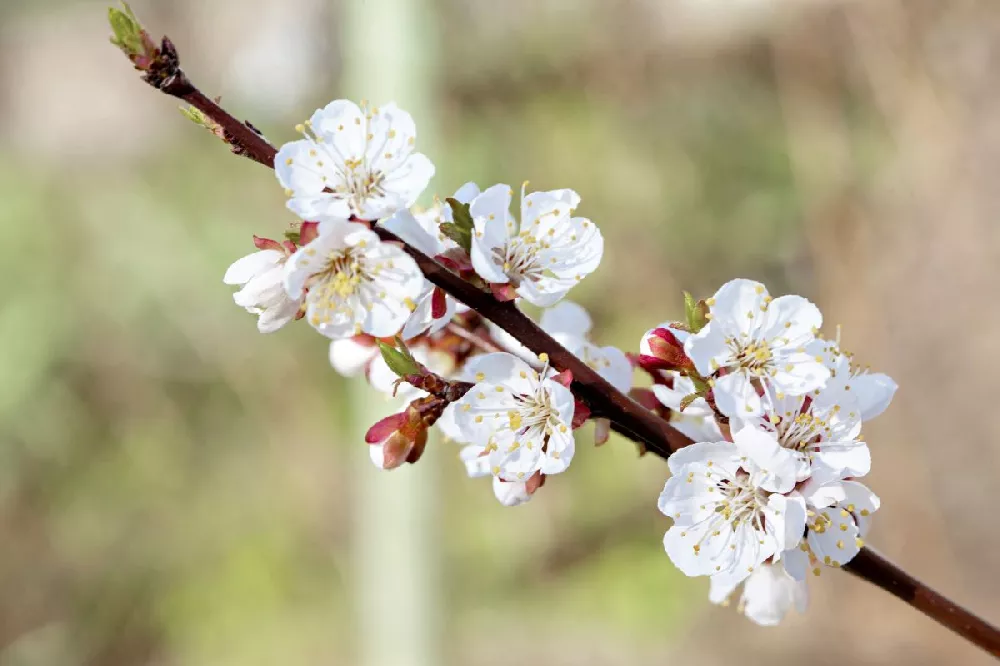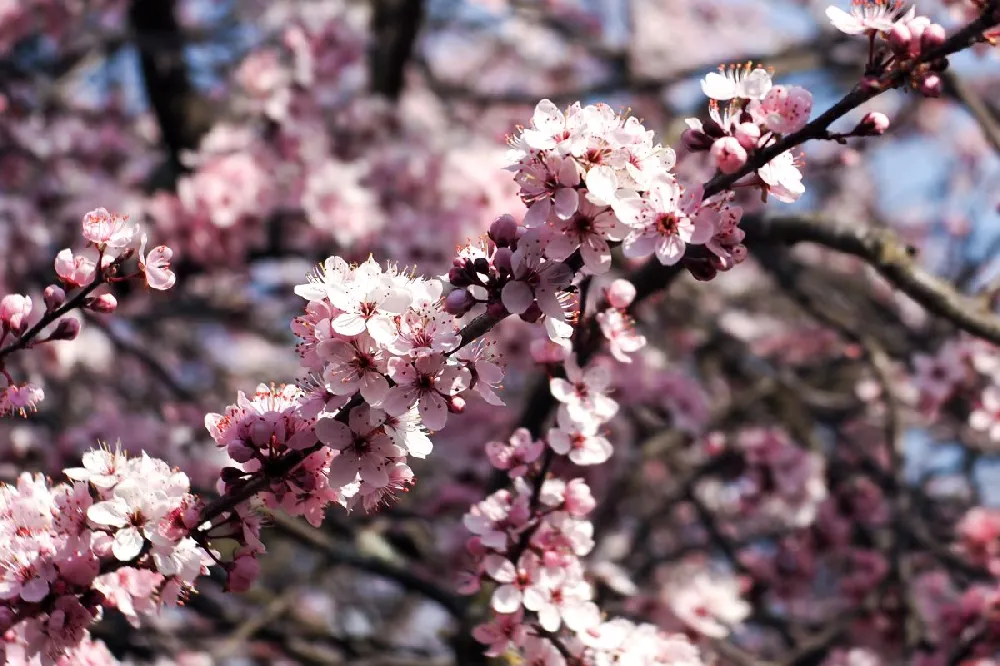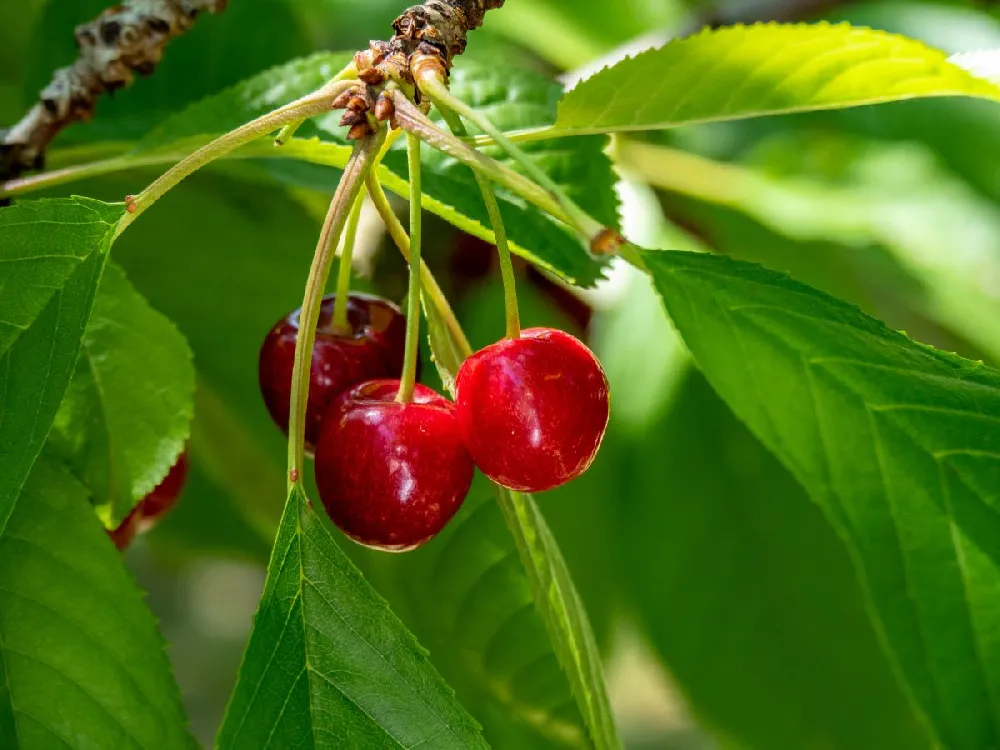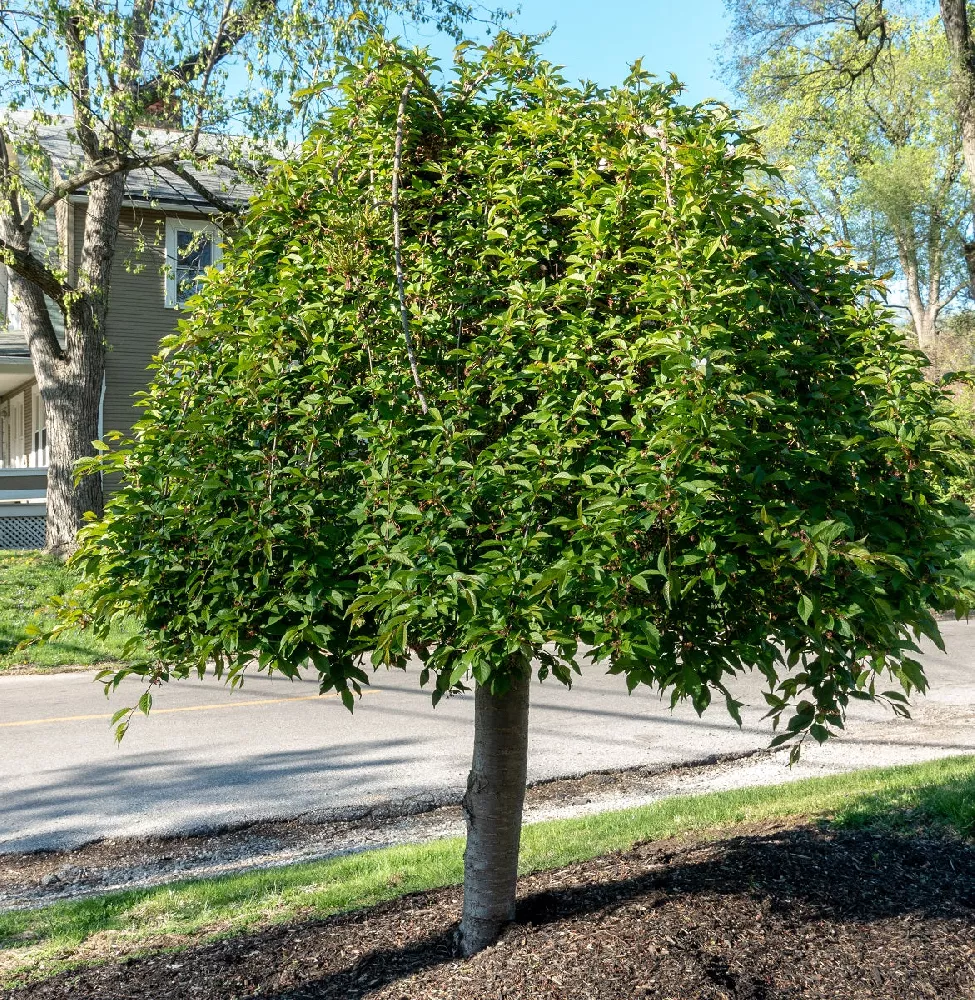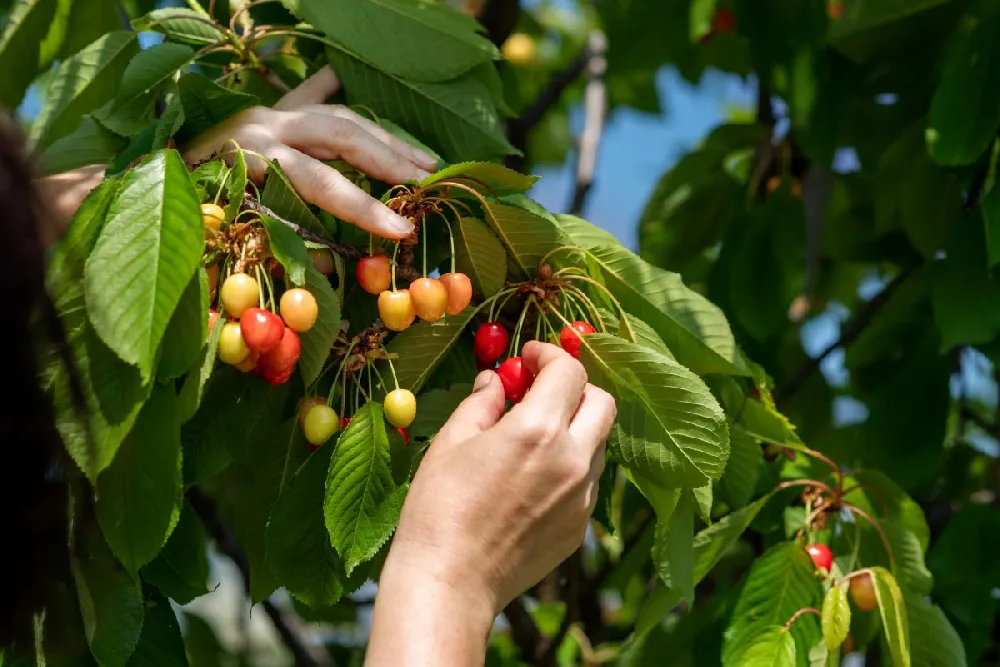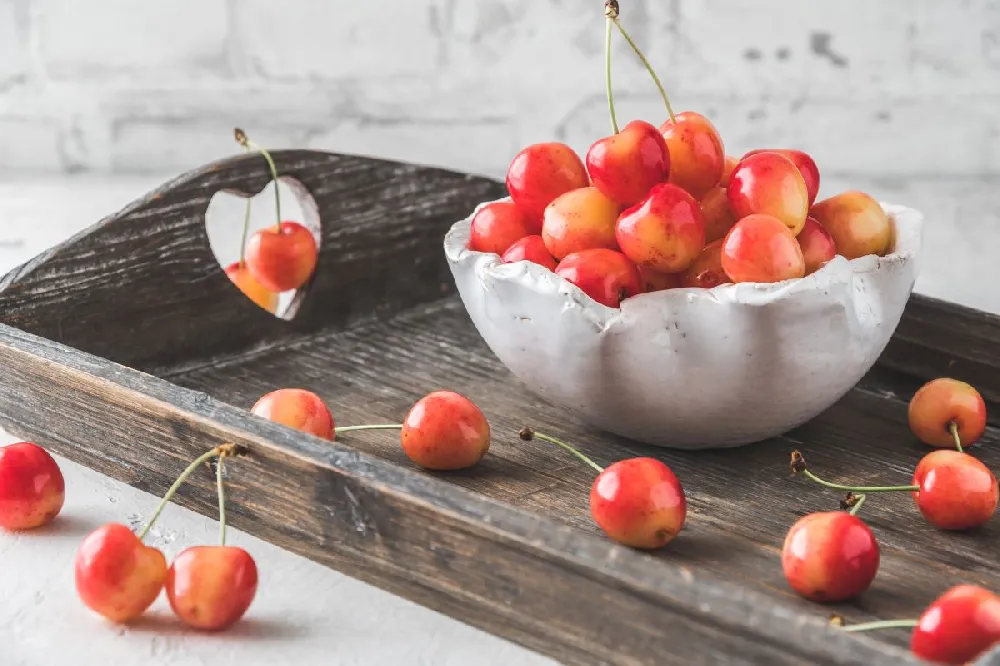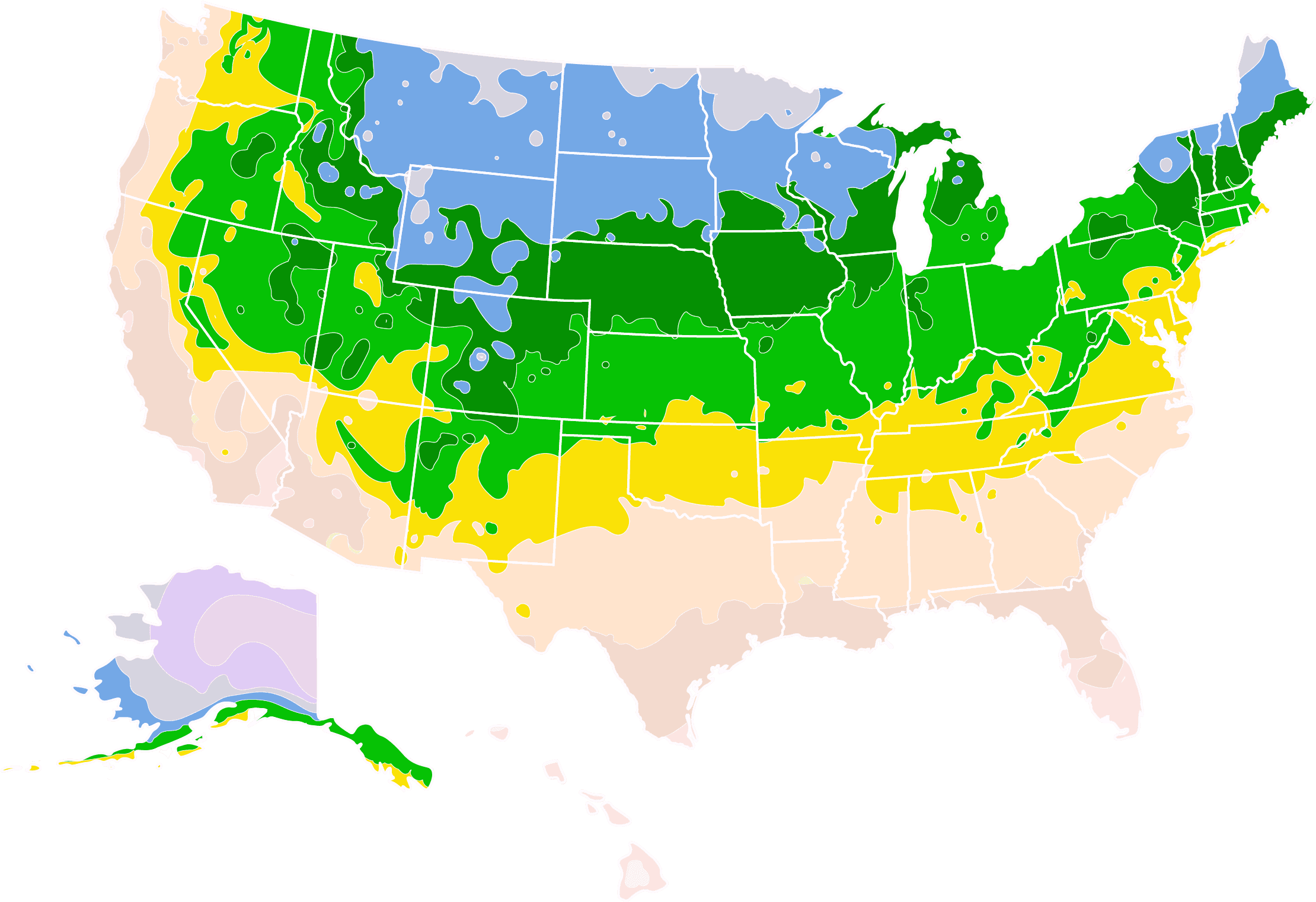- Home >
- Flowers >
- Trees and Plants with White Flowers >
- Chinese Mormon Apricot Tree
Chinese Mormon Apricot Tree for Sale - Buying & Growing Guide
- Ships in 1-2 days
- 1-Year Warranty Eligible
- Pots or accessories are not included unless specified in the product options.
Shipping Details:
Once your order is shipped, you’ll receive an email with a tracking number and estimated delivery date. Most orders ship immediately, but some items are seasonal and may only ship in spring or fall. These products are noted on the website.
While it's true that many of the world's most popular fruit trees thrive in climates that remain warm year-round, the Chinese Morman Apricot Tree is an exception. This plant, Prunus armeniaca 'Chinese Mormon,' thrives throughout hardiness zones four through eight and will offer you a large set of apricot fruits during every summer season. The Chinese Morman Apricot Tree also does not disappoint when it comes to appearance. During spring, this plant blooms with enough white flowers to make it as pretty as any other ornamental plant you may grow.
- The Chinese Mormon Apricot Tree blooms in spring with many white flowers.
- This tree produces many fruits that arrive during mid-summer.
- The Chinese Mormon Apricot Tree survives frosts.
Plant Care
Sunlight

The Chinese Mormon Apricot Tree can survive in both partial shade and full sunlight settings.
Watering
Water your Chinese Mormon Apricot Tree once every week or once every other week throughout the growing season.
Fertilizing

Fertilize this plant in early spring using a fertilizer that is high in nitrogen.
Planting and Care
Planting instructions
When planting a Chinese Mormon Apricot Tree, you can select either a partial shade location or a full sun growing location. It is also important to grow the Chinese Mormon Apricot Tree in soils that are well-draining and have a decent amount of nutrients. To plant this tree, begin by digging a hole that is as deep as the root ball is tall and about twice as wide. Backfill the hole while watering, then cover the planting area with a layer of organic mulch.
Watering and nutrients
After planting a Chinese Mormon Apricot Tree, you should water it often enough to maintain consistent soil moisture throughout the establishment period. Following establishment, you should water this plant about once per week or once every other week in the absence of natural rainfall during the growing season. Fertilization for the Chinese Mormon Apricot Tree is also a straightforward maintenance task. All you’ll need to do is apply a nitrogen-rich fertilizer once per year during early spring.
Pollination
The Chinese Mormon Apricot Tree is self-fertile, which means you need only one plant to conduct pollination and produce fruits. However, if you plant more than one Chinese Mormon Apricot Tree, which allows for cross-pollination, you can expect your trees to produce much larger harvests. Typically, the Chinese Mormon Apricot Tree relies on pollinator insects to conduct the pollen transfer. Those insects arrive in early spring while this plant is in bloom to feed on the nectar within each flower.
Pruning
Pruning for your Chinese Mormon Apricot Tree should take place any time during this plant’s dormant winter growth phase. During that time, you should use a set of sharp and sterile pruning tools to remove any branch that is dead, damaged or diseased. You should also thin the canopy of this plant to encourage better airflow, which lessens the overall odds of moisture-related diseases. Thinning the canopy also allows sunlight to reach all of the foliage and fruits of this plant which will lead to more vigorous growth and better-quality harvests.
Pests, diseases and animals
Sadly, there are many pests that can affect the health of your Chinese Mormon Apricot Tree. Some of those insect pests will specifically harm the fruits and foliage of this plant, while others will diminish its health generally. Some of the most common pests to infest a Chinese Mormon Apricot Tree are scale insects, mites, borers and caterpillars. Your Chinese Mormon Apricot Tree may also experience an infection during its life. Some of the most common diseases to afflict this plant are canker, fruit rot, powdery mildew and shot hole disease, among others.
Harvesting
The fruits of your Chinese Mormon Apricot Tree will be ready for harvest during the mid to late summer in most cases. Typically, the harvest period will last for about one month or less. A ripe apricot is fragrant and slightly soft to the touch. To remove one of these fruits from your Chinese Mormon Apricot Tree, you should twist it gently until it releases from the branch. If a light twisting motion does not release the fruit, you should allow the fruit to remain on the tree to ripen further.
Achieving maximum results
While there are many diseases that can harm a Chinese Mormon Apricot Tree, there are also some preventative measures you can take to lessen the chances of a disease occurring. One reliable method is to spray your Chinese Mormon Apricot Tree with a copper-based fungicide, which can be especially effective for preventing mildew and other fungal infections. If you use a copper fungicide, you should wait until the threat of a late winter frost has passed before applying it.
FAQs
What is the coldest temperature that a Chinese Mormon Apricot Tree can tolerate?
The Chinese Mormon Apricot Tree is a cold hardy fruit tree that lives throughout hardiness zones four through seven, which means that this plant can survive temperatures that drop as low as -20 degrees Fahrenheit. In fact, the Chinese Mormon Apricot Tree not only tolerates cold, but it also requires cold temperatures for fruit development. Without at least 700 chill hours each year, this plant typically fails to produce fruits at all.
Does the Chinese Mormon Apricot have a pit?
As is true of most apricots and similar fruits, the Chinese Mormon Apricot has a relatively large pit at its center. However, the kind of pit present in this tree is known as a freestone pit. Freestone pits are not attached to the fruit flesh, which makes it very easy to remove them by hand. This characteristic makes it very easy to enjoy the fruits of the Chinese Mormon apricot tree in their raw form.
What do Chinese Mormon Apricots taste like?
The Chinese Mormon Apricot Tree produces a set of yellowish-orange apricot fruits that are medium in size compared to other apricots. These fruits are sweet, but their flavor is typically somewhat mild. They also give off a sweet fragrance that is not only inviting but also indicates ripeness. The agreeable flavor of Chinese Mormon apricots allows them to be a useful ingredient in cobblers and other similar baked dishes.
Compare Similar Products
You can't add more Product Name - Product size to the cart.
OK